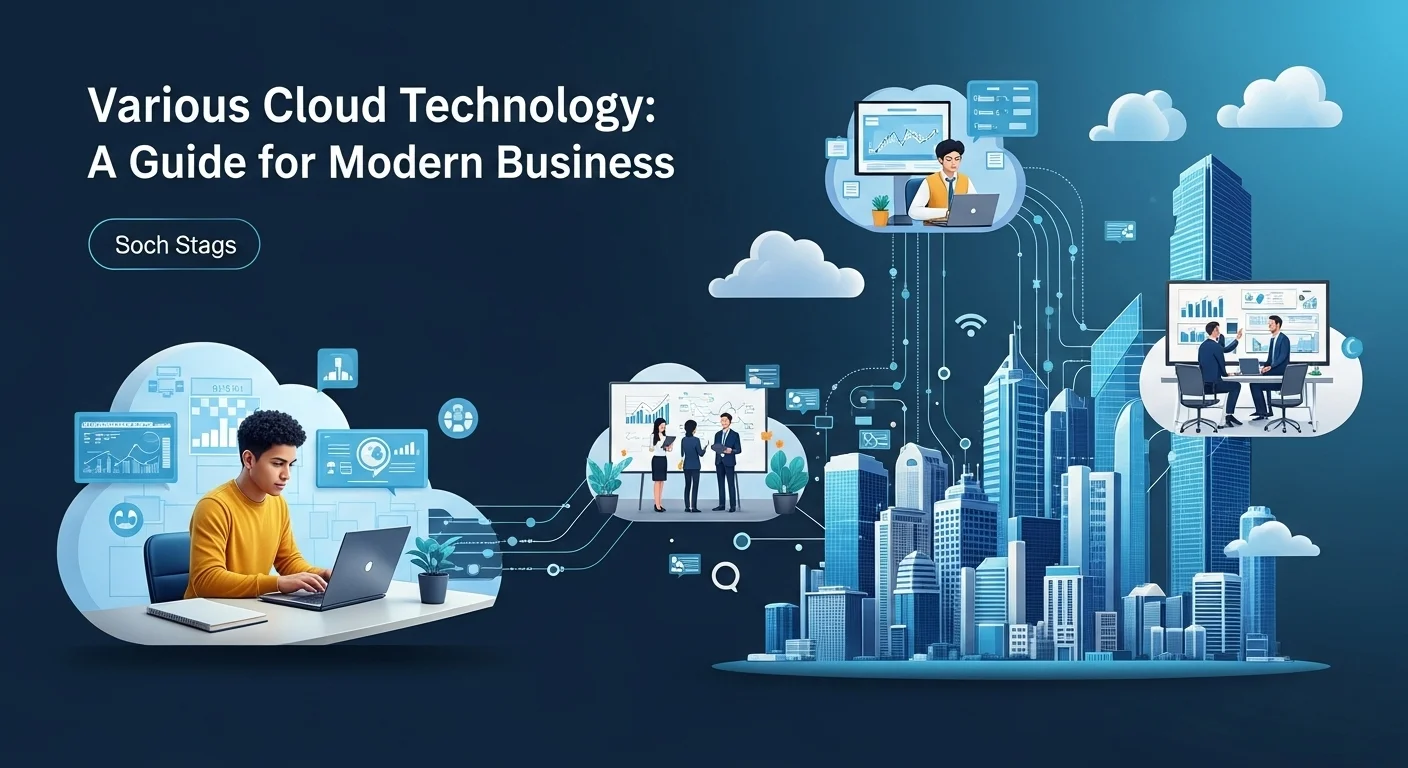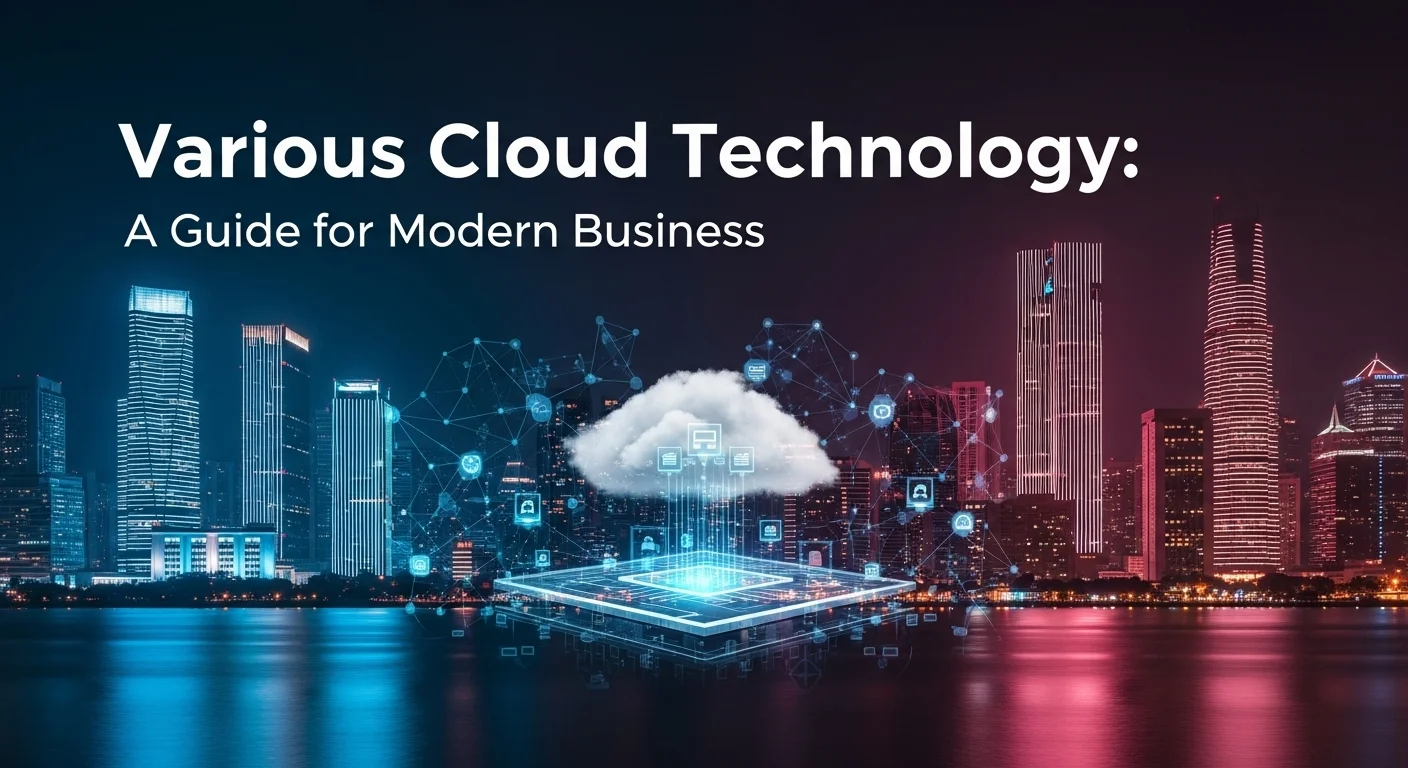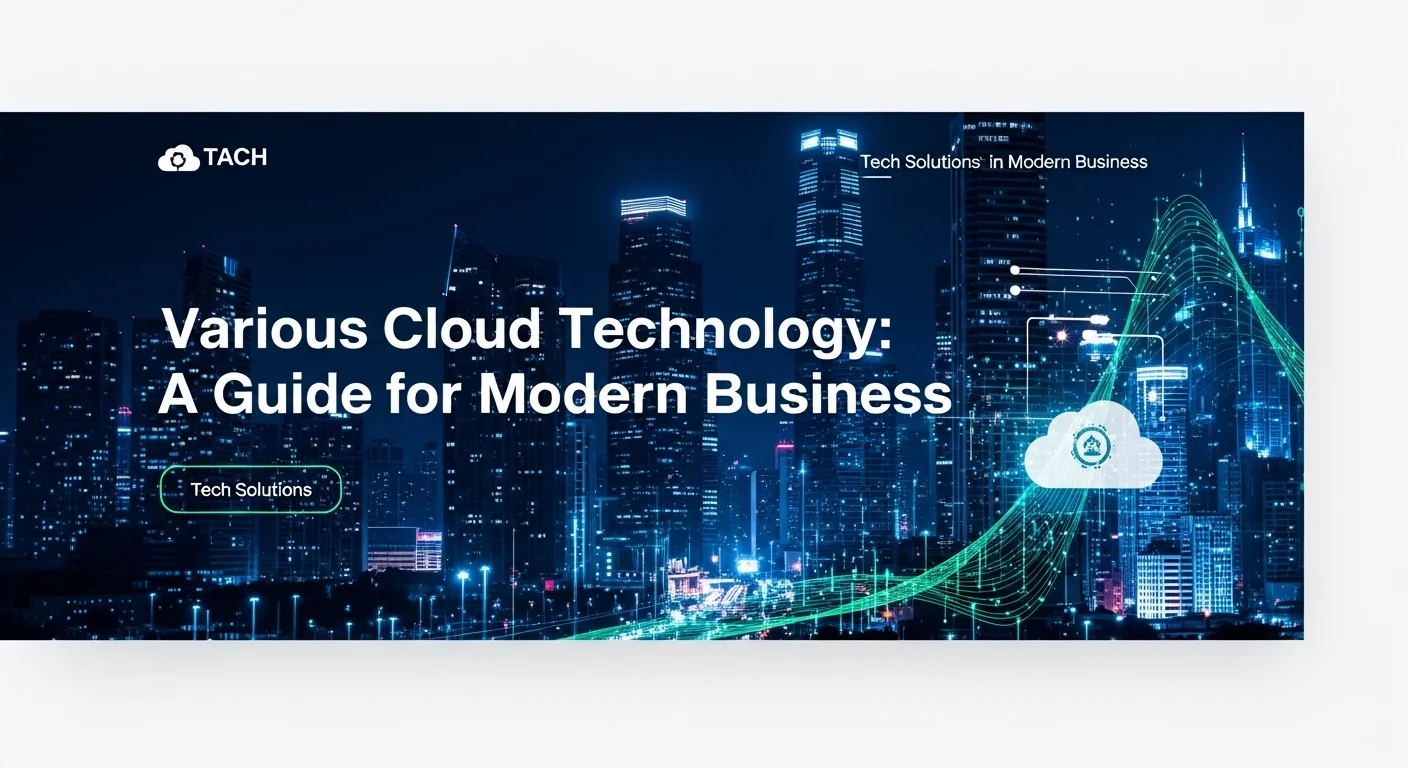The Multi-Cloud Playbook: A Practical Guide for Modern Business

Executive Summary
For years, the big question in tech was 'Should we move to the cloud?' Now, the smartest businesses are asking a better question: 'Which clouds should we use?' A one-size-fits-all approach to cloud computing just doesn't cut it anymore. I've personally guided companies through the switch from a single provider to a flexible, multi-cloud strategy, and the results are transformative. By mixing and matching services from providers like AWS, Azure, and Google Cloud, they get the best of all worlds. This isn't just a tech trend; it's a powerful business move that gives you incredible flexibility, saves you real money, and protects you from costly outages. This guide is my playbook, written from experience and designed to help you build a cloud environment that's perfectly tailored to your goals.
Table of Contents
Table of Contents
- What is a Multi-Cloud Strategy, Really?
- The Real Reasons to Go Multi-Cloud
- Understanding Your Cloud Service Options (in Plain English)
- How Different Industries Win with Multi-Cloud
What is a Multi-Cloud Strategy, Really?
In my line of work, I hear a lot of buzzwords, but the shift to a 'multi-cloud' or hybrid cloud strategy is one of the most impactful changes I've seen. Forget the jargon for a second. At its heart, it's a simple, powerful idea. Instead of putting all your eggs in one basket with a single cloud provider, you strategically use the services of several. Think of it like building a custom toolbox instead of buying a generic multi-tool from the hardware store. That multi-tool is handy, but you'll never get the best screwdriver or the strongest wrench. By picking the best, specialized tool for each specific job, you build something far more effective and powerful. A multi-cloud strategy is just that: picking the right cloud service from the right provider for each part of your business. You might use one provider for its powerful data analytics, another for its cost-effective storage, and keep your most sensitive data on a secure private cloud you control. It's about creating an IT environment that is tailor-made for performance, cost, and security.
The Real Reasons to Go Multi-Cloud
So why go through the trouble? The main driver I see with my clients is the desire to escape 'vendor lock-in.' It’s a terrible feeling when you realize your entire business is so deeply tied to one provider's ecosystem that leaving would be astronomically expensive and difficult. A multi-cloud approach gives you back the leverage. You can foster competition and negotiate better deals. But it's about more than just money. It's about resilience. I'll never forget a client who had their entire e-commerce operation on a single provider. A regional outage took them offline for six hours on their biggest sales day of the year. It was a painful, multi-million dollar lesson. With a multi-cloud setup, they could have failed over to another provider instantly, and their customers would have never known. This kind of resilience used to be reserved for Fortune 500 companies, but now, it’s accessible to anyone who plans for it. By building your applications to be portable using modern tools like containers (think Docker and Kubernetes), you gain the freedom to move workloads wherever they make the most sense, ensuring your business stays online and innovative.
Understanding Your Cloud Service Options (in Plain English)
To build your strategy, you need to know your building blocks. Here are the main service models, explained simply:
- Infrastructure as a Service (IaaS): This is like renting a plot of land. The provider gives you the basic infrastructure—servers, networking, storage—and you build whatever you want on top. You're in charge of the operating system and all your software. It offers the most control and is great for complex, custom needs. Think Amazon EC2 or Azure Virtual Machines.
- Platform as a Service (PaaS): This is like leasing a fully-equipped workshop. The provider manages the building, the electricity, and all the heavy machinery (servers, databases, operating systems). You just bring your tools and materials (your code) and get to work building your product. It’s fantastic for developers because it lets them focus on creating apps without worrying about the underlying infrastructure. Think AWS Elastic Beanstalk or Google App Engine.
- Software as a Service (SaaS): This is the most familiar. It’s like subscribing to a magazine or a streaming service. You don't own the printing press or the film studio; you just use the final product. The provider handles everything. Salesforce, Microsoft 365, and Dropbox are perfect examples. You just log in and use it.
- Function as a Service (FaaS) or Serverless: This is the newest model. Imagine having a magic helper who only appears when you need them to do a specific task and disappears afterward. You only pay for the exact moment they are working. This is what FaaS does for your code. It runs small functions in response to events (like a user uploading a photo) without any servers for you to manage. It's incredibly cost-effective for tasks with spiky or unpredictable traffic.
A smart multi-cloud strategy mixes and matches these. You might use SaaS for your email, PaaS for your new mobile app, and IaaS for a legacy database you need to migrate.
How Different Industries Win with Multi-Cloud
This isn't just theory; it's delivering real value. In retail, I've helped companies use a hybrid model to handle the massive traffic spikes of Black Friday. They run their day-to-day operations on a cost-effective private cloud and then 'burst' into a public cloud like AWS or Azure to get near-infinite scale when the shopping frenzy hits. No more crashed websites and lost sales. In finance, where security is everything, a hybrid approach is standard. They keep their crown jewels—customer data and transaction systems—on a super-secure on-premise or private cloud, while using the public cloud's innovative tools to build customer-facing apps. This gives them both Fort Knox-level security and the agility of a startup. The core benefits are universal: you optimize costs by choosing the most affordable platform for each job, you drive innovation by accessing the best AI or machine learning tools from any provider, and you build a more resilient and secure foundation for your entire business.

The Complete Guide to Building Your Multi-Cloud Strategy
Moving from the idea of a multi-cloud strategy to a successful reality requires a clear plan. It’s a journey that combines smart technical architecture with savvy business decisions. This is the part of the process where I roll up my sleeves with my clients and build their roadmap. Let's walk through the technical and business steps you need to take.
The Tech Toolkit for Juggling Multiple Clouds
Managing several cloud environments can become chaotic without the right tools and architecture. The goal is to make your different clouds feel like one cohesive system. Here’s what’s in my essential toolkit:
- Containerization & Orchestration (Docker & Kubernetes): This is the absolute game-changer for multi-cloud. By packaging your applications into containers with Docker, you create a standardized, lightweight package that can run anywhere. Kubernetes is the master conductor for these containers. I often call it the 'universal remote' for your apps. It lets you deploy, manage, and scale your applications consistently across AWS, Azure, and GCP. You build it once, and you can truly run it anywhere.
- Infrastructure as Code (IaC): This means defining your entire IT setup—servers, databases, networks—in code files. A tool like HashiCorp's Terraform is indispensable here because it’s cloud-agnostic. I've used it to help teams write a single set of configuration files to deploy an entire application stack on Azure, and then with a few minor tweaks, deploy the exact same stack on GCP for a disaster recovery environment. It ensures consistency and makes your setup repeatable and auditable.
- Unified API Management: When your services are scattered across different clouds, you need a single, secure front door for them all. An API Gateway acts as this traffic cop. It handles authentication, security, and routing, so your app developers don't have to worry about whether the service they're calling lives on AWS or a private server.
- Federated Identity Management: You can't have your team juggling five different passwords for five different cloud consoles. It's a security nightmare. A centralized identity provider like Azure Active Directory or Okta allows you to manage user access to all your cloud resources from one place. Someone joins the team? You grant them access once. They leave? You revoke it once. Simple, secure, and essential.
- Centralized Observability: You need a single pane of glass to see what's happening across all your environments. Trying to debug an issue by logging into three different monitoring portals is a recipe for disaster. Platforms like Datadog or New Relic pull in logs, metrics, and performance data from all your clouds into one unified dashboard. It allows you to see the whole picture and solve problems fast.
The Business Playbook for a Winning Strategy
The tech is only half the battle. A successful multi-cloud adoption is driven by business goals.
- Map Your Applications: The first step is a practical one. Get your team in a room and audit every application you have. Decide where each one belongs based on cost, performance, security, and compliance. Some apps can be easily moved to a public cloud (lift-and-shift), some are perfect candidates to be rebuilt as cloud-native, and some critical legacy systems might need to stay right where they are, connected via a hybrid link.
- Embrace FinOps (Cloud Financial Operations): The cloud's pay-as-you-go model is a double-edged sword. FinOps is the practice of bringing financial discipline to it. This isn't just about the finance department sending a report. It's about creating a culture of cost-awareness. We set up teams with members from tech, finance, and business to track spending in real-time, set budgets, and continuously hunt for savings.
- Form a Cloud Center of Excellence (CCoE): This is your central hub of cloud expertise. The CCoE sets the rules of the road. They define the security policies, approve which cloud services teams can use, and provide training. They are the guardians who ensure that you're using the cloud in a way that is secure, efficient, and consistent, preventing the chaos of different departments going off in different directions.
Comparing the Titans: AWS vs. Azure vs. GCP
| Provider | Key Strength | My Experience: Best For... |
|---|---|---|
| Amazon Web Services (AWS) | The market leader with the widest, most mature range of services. | Companies that want the biggest toolbox available. It's often the default choice for startups and teams that value its immense community support and developer-centric tools. |
| Microsoft Azure | Unbeatable integration with the Microsoft enterprise world (Windows Server, Office 365, Active Directory). | Large enterprises already heavily invested in Microsoft products. Their hybrid cloud story is incredibly strong and seamless for these organizations. |
| Google Cloud Platform (GCP) | World-class expertise in data analytics, machine learning, networking, and Kubernetes. | Data-driven companies and those building modern, container-based applications. Their BigQuery and Google Kubernetes Engine (GKE) services are, in my opinion, best-in-class. |
The ultimate goal of a multi-cloud strategy isn't to pick a winner. It's to give your business the freedom to use the best services from every provider, creating a whole that is greater than the sum of its parts.

Mastering Your Multi-Cloud World: Pro Tips & Strategies
Getting your multi-cloud environment up and running is just the beginning. The real art lies in managing and optimizing it over time. It's a continuous process of refinement. Here are some of the most important tips and strategies I share with my clients to help them master their cloud experience, focusing on what matters most: security, cost, and performance.
Best Practices for Security in a Distributed World
When your infrastructure is spread out, your security approach has to be rock-solid and unified. A scattered defense is no defense at all.
- Adopt a 'Zero Trust' Mindset: The core principle is simple but powerful: 'never trust, always verify.' In a multi-cloud world, you can't assume a request is safe just because it came from inside one of your networks. I tell my teams to be paranoid but prepared. Every user and service must be strictly authenticated and authorized for every single action. This means multi-factor authentication (MFA) is non-negotiable, and you must enforce the principle of least privilege—give access only to what is absolutely necessary.
- Get a Security Posture Manager (CSPM): These tools are your automated security guards. A CSPM constantly scans all your cloud environments—AWS, Azure, GCP—for misconfigurations and vulnerabilities. It will instantly alert you if a developer accidentally opens a database to the public internet or disables a critical logging service. It's your single source of truth for cloud security hygiene.
- Unify Your Threat Detection: Your security team can't be watching five different screens. A unified Security Information and Event Management (SIEM) platform is crucial. It pulls in security alerts and logs from all your providers into one place. This allows your team to connect the dots—for example, correlating a suspicious login from Azure with strange activity in AWS—to spot and stop an attack before it becomes a disaster.
Advanced Strategies for Cost Management (FinOps)
Without discipline, multi-cloud costs can explode. I've seen it happen. Here’s how to keep them under control.
- Automate Your Savings: Don't just look for savings; build a system that finds them for you. Use tools that automatically shut down development and testing environments on nights and weekends. Set up automated rightsizing tools that use machine learning to analyze usage and recommend cheaper, more efficient server types. These small, automated actions add up to huge savings.
- Become a Master of Discounts: All providers offer big discounts for long-term commitments (like AWS Savings Plans or Azure Reserved Instances). Don't just buy them randomly. Use cost management tools to analyze your stable, long-term usage and make informed commitments. For unpredictable workloads, get aggressive with Spot Instances. They can save you up to 90% but come with the risk of being shut down. The trick is to design your applications to be fault-tolerant so they can handle these interruptions gracefully.
- Tag Everything. No, Really: You can't control what you can't measure. Enforce a strict policy of 'tagging' every single cloud resource with its owner, project, and cost center. This sounds tedious, but it's the only way to know exactly who is spending what. When you can show a department head a precise bill for their team's cloud usage, they become much more motivated to be efficient.
Essential Tools and Quality Resources
You don't have to navigate this journey alone. The right tools and knowledge make all the difference.
- My Non-Negotiable Tool Stack:
- Infrastructure as Code: For me, it's HashiCorp Terraform. It's the industry standard for a reason.
- CI/CD (Automation): A solid pipeline with tools like GitLab CI, Jenkins, or GitHub Actions is crucial for deploying code consistently across clouds.
- Observability: You need a single pane of glass. Datadog, New Relic, or Dynatrace are my top picks.
- Advanced Cost Management: Look beyond the provider's built-in tools. Platforms like CloudHealth or Apptio Cloudability provide deeper FinOps insights.
- Learn from Real-World Stories: Theory is good, but experience is better. Read case studies on how companies like Spotify use GCP for data and AWS for infrastructure to serve a global audience. Study how retailers use hybrid cloud bursting for peak seasons. Most importantly, read the post-mortems when a major cloud provider has an outage. These are invaluable lessons in the importance of multi-region and multi-cloud design.
- A Resource I Trust: For a high-level, strategic view, I always recommend looking at the latest Gartner Magic Quadrant for Cloud Infrastructure and Platform Services (CIPS). You can usually find excellent summaries from tech publications that analyze the report. It gives you an unbiased look at the strengths and weaknesses of the major providers, which is critical when you're deciding where to place your strategic bets.
Ultimately, a successful multi-cloud strategy turns your IT department from a cost center into an engine for growth. It requires a commitment to security, financial discipline, and continuous learning, but the payoff in resilience, innovation, and competitive advantage is well worth the effort.
Expert Reviews & Testimonials
Sarah Johnson, Business Owner ⭐⭐⭐
This was a good starting point, but as a small business owner, I was hoping for a section on how to start small with just two cloud providers without a massive budget. A bit more on the 'first steps' would be great.
Mike Chen, IT Consultant ⭐⭐⭐⭐
As an IT consultant, I found this guide incredibly useful for framing multi-cloud conversations with my clients. The analogies for IaaS, PaaS, and SaaS are gold! I'm already using them.
Emma Davis, Tech Expert ⭐⭐⭐⭐⭐
An outstanding and comprehensive breakdown. I've read dozens of articles on this topic, and this is the first one that connects the high-level business strategy to the essential technical details so clearly. The section on FinOps was a real eye-opener.



